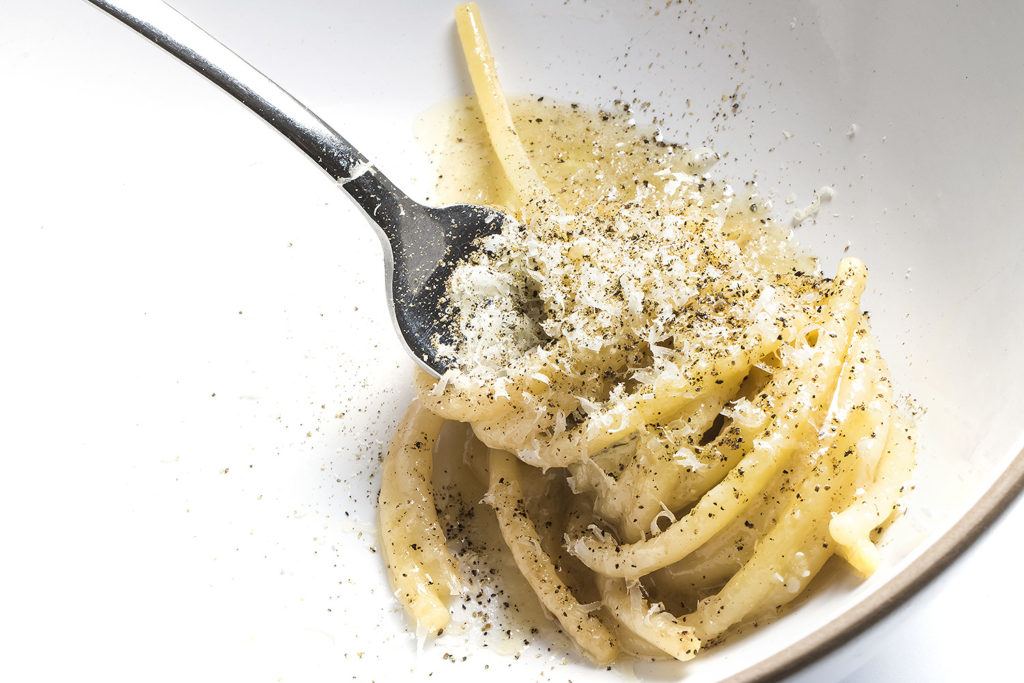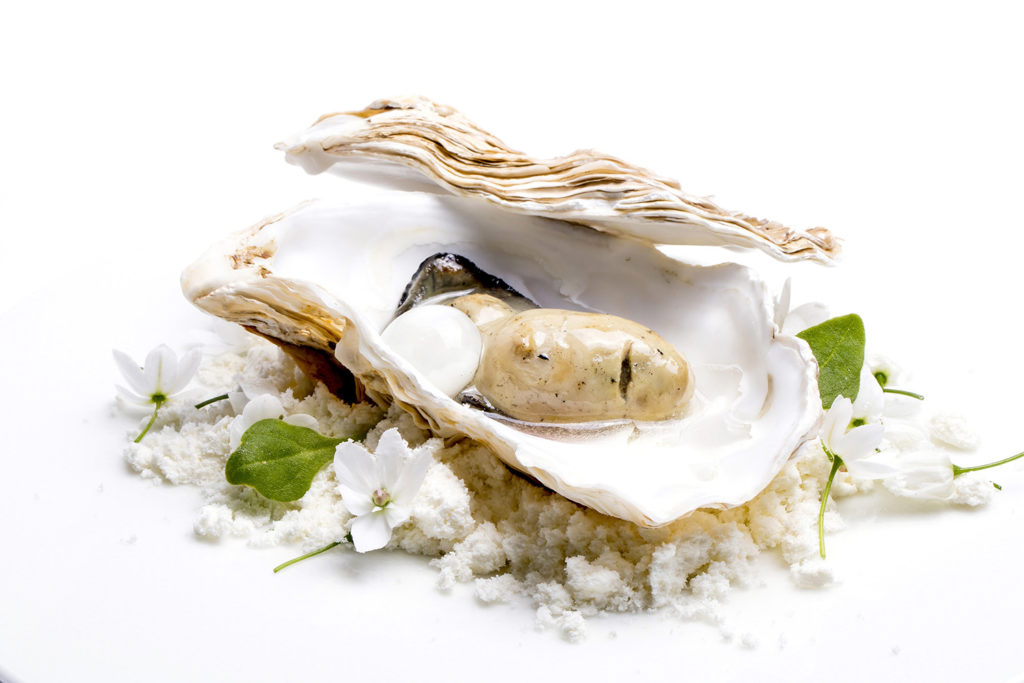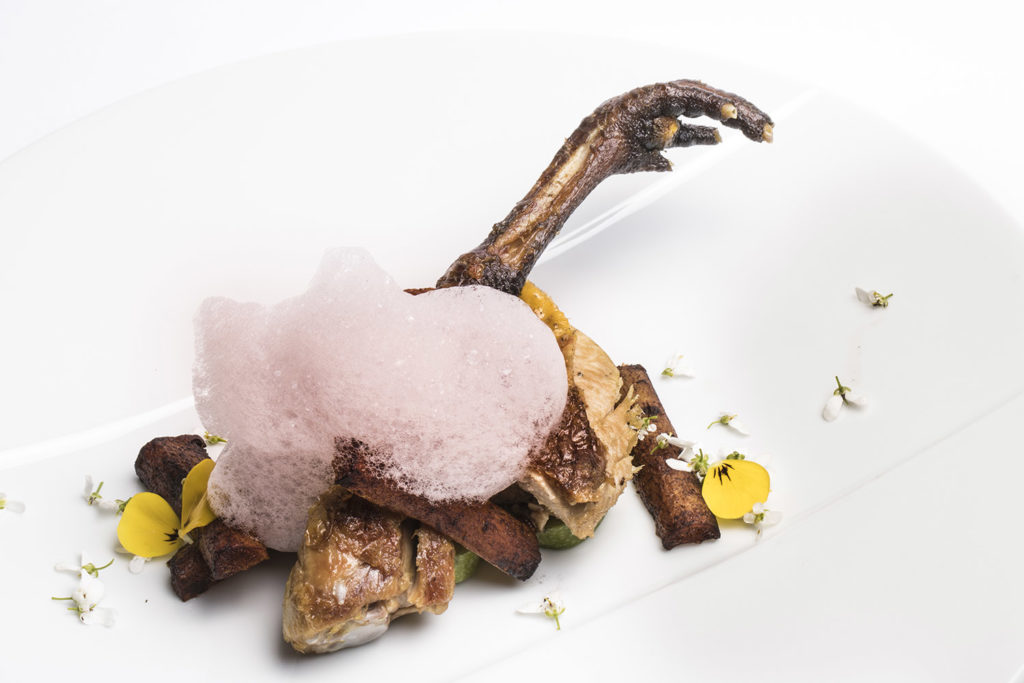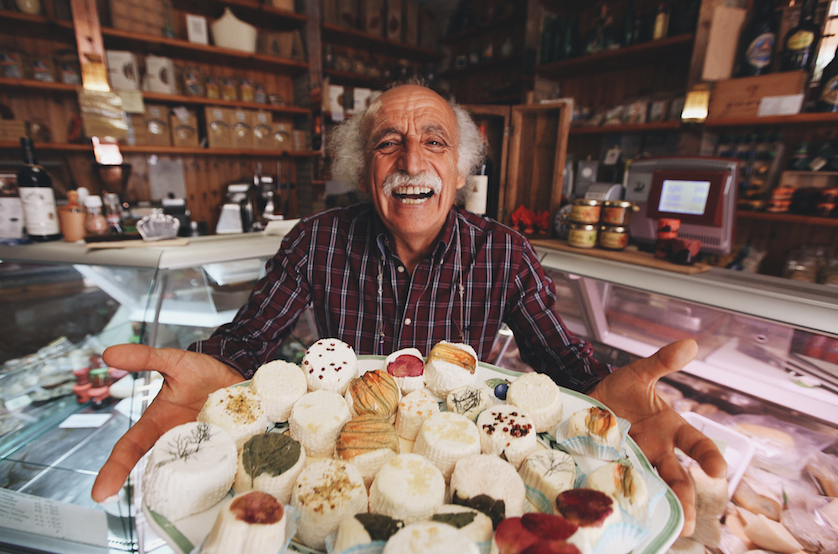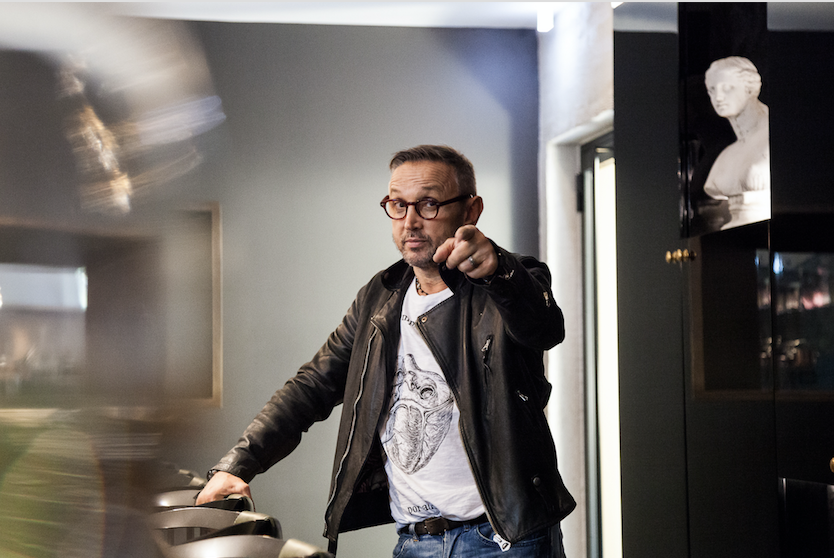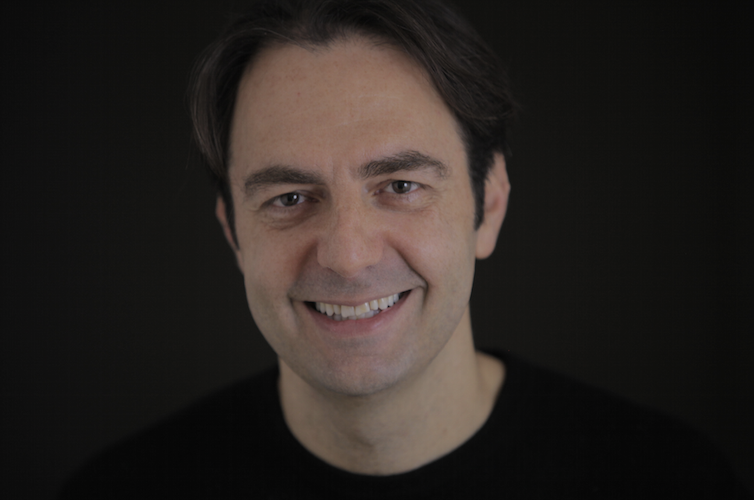Dining with Errico Recanati, a multi-prize winner chef
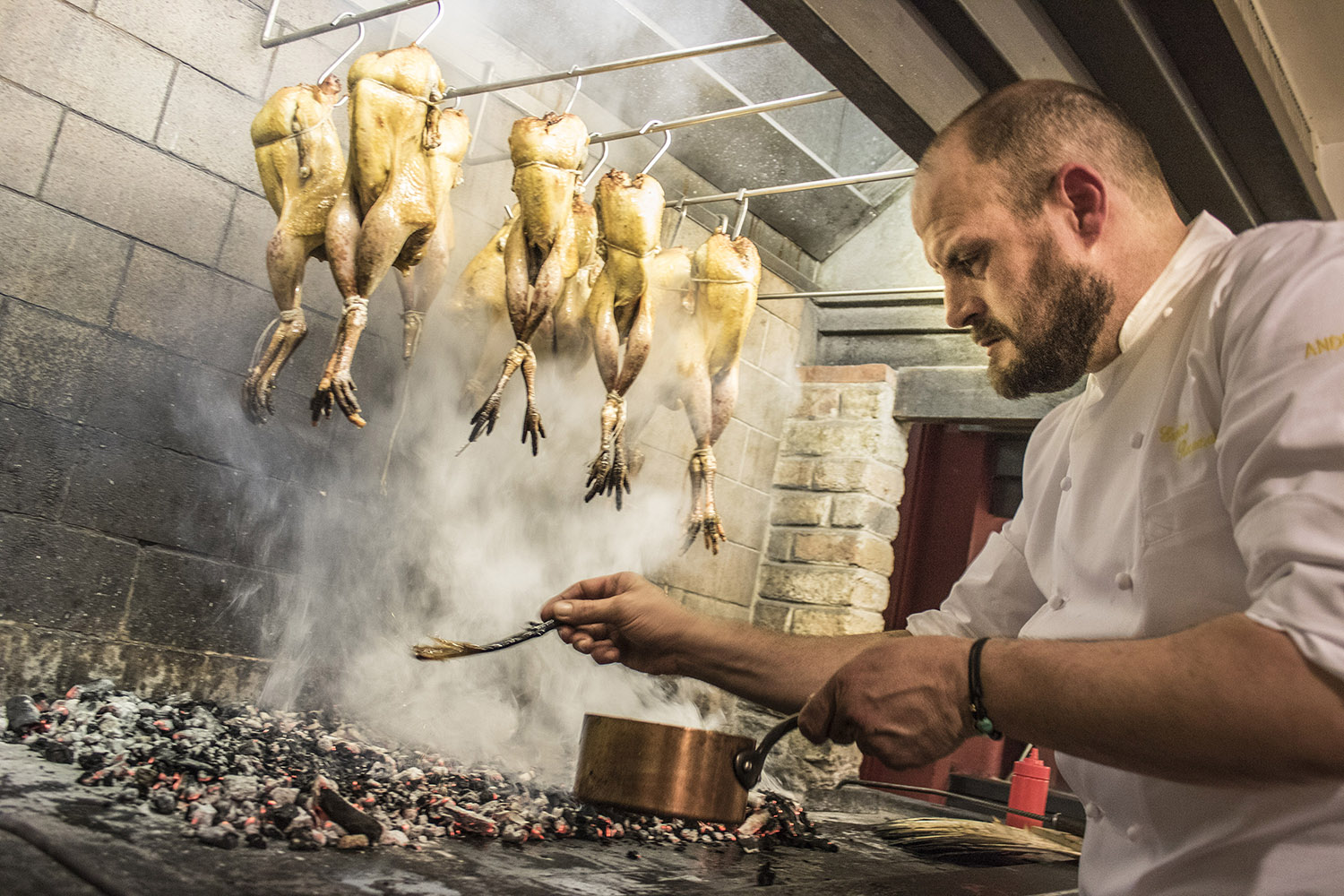
They call him a “warrior of skewer and embers”, a determined defender of raw materials and a solid rock of the culinary tradition of Italy and of Marche.
It is precisely because of his love for raw materials that in October last year he was awarded the “Gambero Rosso Terra e Ambiente” (Earth and Environment Red Shrimp) prize, with the following motivation: “When sustainability is both appearance and substance. Promotion of the territory and of its products through a cuisine which fully respects earth, environment and men”.
The “Gambero Rosso” prize is joined by such an important award as the Michelin Star. “Two spouses sharing a great passion for original raw materials which constantly grows due to a cuisine which revives the tradition – concerning almost exclusively meats – with tasty skewer and embers proposals in the main courses”. This is the way the Michelin Guide inspectors described the Andreina Restaurant.
Being a chef is the same as being an artisan who elaborates matter through research, passion, attention, love and care, in order to get an excellent culinary product.
Errico Recanati
With these words chef Errico Recanati, in his Andreina Restaurant in Loreto, starts telling us about his cuisine and its territory, the rich and fascinating ecosystem of Marche, which is divided between earth and sea and privileges traditional recipes and the cult of embers, but with a modern and futuristic approach.

Cacio e pepe 
Oyster
Where does your passion for cuisine come from?
My passion for cuisine is rooted in my family, a grandmother, lit hearths, a 65 years long story and all the colours which make up a kitchen. I am an autodidact. It is unavoidable, when one grows up in a restaurant and lives in it since his childhood and, when back from school, stops and watches the bustle of waiters, the chatting customers and feels his passion growing in him.
What memories of granny Andreina do still come to your mind?
Passion, care, love and dedication. She tasted, saw and controlled everything, from ingredients before they were cooked to dishes ready for the customers. How many times I’ve been watching my granny standing in front of those enormous pots where stewed quails kept boiling on brick burners! She never diverted her attention from those five burners, which she controlled till cooking was finished.
From granny Andreina’s phyllo dough and skewer to… How would you define your cuisine, today?
A cuisine caring for the product, for raw materials, for my region and for the point where the chef should start from, which is the skewer. In time I realized that the main ingredient of embers is smoke. It must be captured and directed through a cap, to be lifted and lowered according to the required kind of cooking. I mind the distance from fire through raised grills. I cook Guinea-hens keeping them 35 cm above embers. By distancing meats we get slower cooking, crispier skins and perfect baking, like in ovens. A cook is like an artisan who knows his materials and doses both his ingredients and cooking time. I am learning to deduct the cooking degree of meat through the smell of smoke. It is an incredible sensorial experience. Smoke must be tamed by raising and lowering the grills: it is the only way to give meats the right compactness. Embers, whether produced from wood or charcoal, should be lit in due time, and under the grill there should be a lit fire. We leave grill plates to others. How many times did you really eat grilled meat, when dining outdoor?

Pernice e giardiniera 
Faraona cotta da lontano
Can everybody dine at Andreina’s, both omnivore and vegetarians and even vegans?
Everybody is welcome, here: even vegans. In fact, further to meats, we also cook dishes based on vegetables, 80% of which are rigorously cooked on embers. Many wonderful people dine here, and I thank them from the bottom of my heart. Thanks to them, I am here, today, reinventing myself with a great enthusiasm.
Which are your most loved dishes?
Guinea hens “cooked from a distance”, grilled oysters, partridges, salted codfish cooked under ashes. One of the specialities we created is grilled spaghetti served with “cacio” cheese, pepper and “Cau Spada” pecorino cheese matured underground with seven different kinds of pepper. We cook it under the caps in order to better toast it and give it a compactness other than if boiled. Then it is cooked until creamy with “cacio” cheese and pepper.
Let us describe Marche through your dishes and your recipes.
I want to tell you about Ascoli Piceno and especially its famous Ascolana Olives, re-elaborated through time in so many ways. I was invited to an event and thought of honouring Ascoli and its precious olives with a special innovative recipe. I put into a box a piece of knife-beaten meat from the Scibè Doriano farm, cut in an oval shape, with a little bag of flour from blended Gregori dried green olives and fried bread. The raw meat should be put into the bag until it is completely covered with the olive flour; then it should be put on the fried bread and eaten. With this recipe I brought the spirit of Marche around Italy. A cook should promote his territory. I love doing it through its raw materials and its producers. What really matters is not so much talking about zero-kilometres products, as looking for the best raw materials from Marche.
A Michelin Star and the “Gambero Rosso Terra e Ambiente” award: what do these awards mean to you?
The Michelin Star is an acknowledgement of our history and of what we’ve been doing with so much passion and research. Tourists who come to Marche and dine at Andreina’s Restaurant find in their dishes messengers of a beautiful land whose colours, tastes and perfumes were never enjoyed before and the best products. Earth and environment are important because they lead to the awareness of raw materials. We have got 22 “visciola” cherry trees and produce cherries in sugar syrup. We grow 22 aromatic herbs, thanks to the dedication and the patient work of a co-operator who helps and supports me. Our work begins precisely in that garden and ends in the kitchen.
What suggestions would you give to young people who start the profession of chef?
Find another job! Joking aside, it takes passion, respect, love and dedication. One cannot work without these special ingredients. Get up early in the morning with the spirit and the cheerfulness of a 12 years old child and work hard like a 70 years old carpenter who plans wood the whole day long. I worked with a chef who said: “If a tailor can sow an eyelet, then a cook can peel beans”. A chef must remove all difficulties and make dining easy to his guests. We are reverting to emotions and memories.
What is it like working with your wife Ramona Ragaini?
It is a beautiful experience. She’s younger than me, and this facilitated the comparison between different perceptions as well as the exchange of ideas about what is up-to-date. We are an ever experimenting and researching team, living the present but rooted in tradition.
Describe Ramona for our readers.
She’s a very bright and careful person who belonged to a different world, but lives in mine intensely and with love. She loves such living food as grapes, which led her to develop a passion for wine.
Would you offer some recipes of yours to the readers of “Whymarche”?
Let us begin with mackerel with onions cooked under the ashes, accompanied by a mix of tender wild grasses marinated in raspberry vinegar. They perfectly match with a Verdicchio di Matelica or from Castelli di Jesi wine.
I would stand by the tradition and suggest cappelletti in capon soup, the capon stuffed with local meats and the soup flavoured with flakes of Acqualagna truffle. The lot accompanied by a great white wine from Marche. Next, a cardoon salad and the boiled capon seasoned with a mustard ice cream. For the dessert, classic varied compactness “visciole” cherries custards with sugar. Finally, a “Visciole” juice water-ice.
by S. Conti
